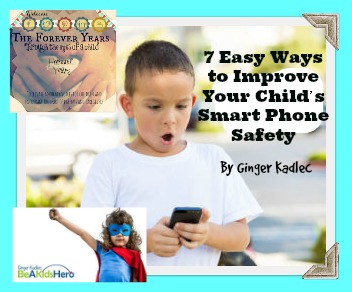Your child’s first smart phone… a time of excitement for your child. A time of relief… and anxiety… for you.
Smart phones can open a whole new world to your child – a world filled with friends, games and fun. However, there are also very real dangers that can present themselves in that world, too.
Far too many parents purchase smart phones, hand them over to their children and allow them to go on their merry way. But that’s exactly the wrong thing to do!
Would you hand your car keys to your child and say, “Go ahead! Drive across the country… just check in with me now and again so I know you’re okay”? Of course, you wouldn’t do that! You would have NO idea where your child is or with whom your child may be connecting.
This same concept holds true with smart phones or other access to the internet. Not prepping your child to know how to safely use this new device is truly like handing him/her the keys to your car without any driver’s education or training.
It’s essential to prepare kids to use digital devices in a safe way. So how can you do that? Well, here are 7 simple steps to help get you started.
1. Work with your smart phone carrier to secure parental controls on your child’s account. Check with your carrier about parental controls they offer (beyond those you can set-up on the phone). Depending on the carrier, you may be able to purchase, for a small monthly fee, features like call blocking, usage restrictions based on time of day, data and text limits that you set, and even designate trusted/safe numbers. There are additional parental controls you can physically set-up on your child’s phone. Learn how to set-up the parental controls on your child’s iPhone or Android… and know that, at some point, those manual controls could be removed by your child (or his/her friends), so refer to #4 below to be sure those controls remain in-tact.
2. Establish boundaries of use. In addition to the parental controls you impose, it’s important to outline your expectations for your child’s usage of this new phone. By allowing your child use of a smart phone, you are instilling a level of trust with your child that s/he will be responsible when using this device… but your child needs to understand what “responsible” means when it comes to using this cool new gadget. So, set expectations, such as:
- The times of day your child is allowed to use his/her smart phone. (For example: no earlier than 7:00 am and no later than 9:00 pm.)
- Limitations for using the phone. (For example, do not use the phone during class, at the dinner table, when guests are over, when crossing the street, etc.)
- Any friend request by someone you don’t know (that isn’t a known friend of your child’s) needs to be approved by you. Sexual predators often portray themselves as other children, lying about their ages, gender, names and background. Help your child be smart about accepting new friend requests. Netsmartz, an initiative by the National Center for Missing and Exploited Children, offers terrific videos kids should watch to better understand online threats and heighten their awareness about the need to be safe online.
(To read more of this article, please follow the link below…)
http://www.beakidshero.com/posts/7-easy-ways-improve-child-smart-phone-safety/
